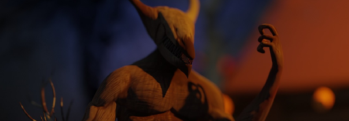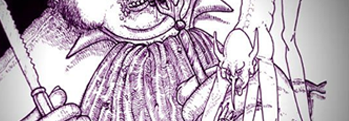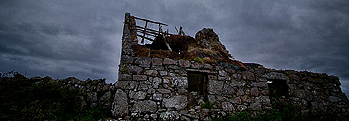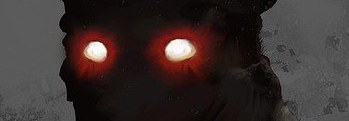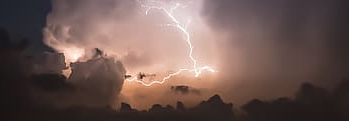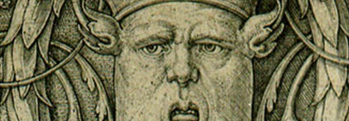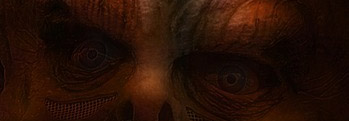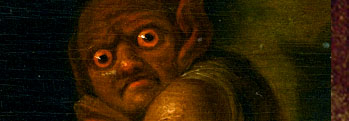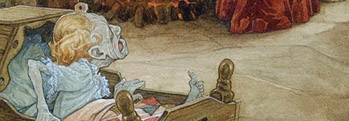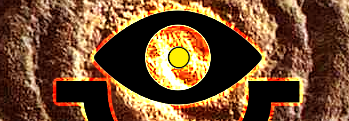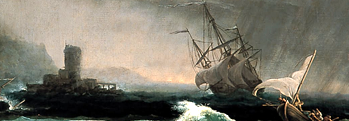Manannan mac Lir
Irish and Celtic myths and legends, Irish folklore and Irish fairy tales from Irish Gods and Monsters
Prince of the Waves, Son of the Sea
 A name which echoes through many ancient Irish myths and legends is that of the spirit of the oceans, Manannán mac Lir. Was he a Gaelic god and father of gods, a powerful king of old, first among the Tuatha De Danann, a title for a cult of secretive mystics or a Lord of the Otherworld? Perhaps all of these and more, or none.
A name which echoes through many ancient Irish myths and legends is that of the spirit of the oceans, Manannán mac Lir. Was he a Gaelic god and father of gods, a powerful king of old, first among the Tuatha De Danann, a title for a cult of secretive mystics or a Lord of the Otherworld? Perhaps all of these and more, or none.
The earliest legends of the Gaels say it was Manannán who led the surviving Tuatha to safety after they lost their war with this new and vigorous race of men, protecting them and cloaking them in the mist of invisibility, the féth fíada, hiding their homes and strong places, their halls and mounds in a supernatural fog. Some say this sorcery persists even today, thinning only on cross-quarter days when other worlds come close to this one!
Manannán was said to be the high king of three realms, or perhaps it was only one place under three names. These were Emain Ablach, the place of the apples, where Lúgh was raised, a land filled with swans and yews. Manannán gave to Lugh a magical spear which he used to slay Balor of the evil eye, master of the dreaded Fomorian race. From this place came the magical silver apple branch given to Bran mac Febail, and here it was said Manannán made his own home.
Tír na nÓg or the land of the young was another of his realms, an island paradise of everlasting youth, beauty, joy and abundance. It was also called the Land of Promise or Tír Tairngire.
Here the Tuatha Dé sang poems to one another, composed music, danced and enjoyed the feast of Goibniu, which was said to grant immortality to partakers. They ate Manannán's Swine, the Mucca Mhannanain, which produced an inexhaustible supply of food.
There were many other wonders in this fabled otherland, such as a well where salmon swim under a grove of nine hazels, from which hung an enchanted drinking horn. A huge tree with birds singing beautiful music in its branches stood in the centre of the isle. Legends speak of cities and fortresses made of jewels and precious metals, and houses thatched with the colourful feathers of exotic birds, and a bright plain of flowers humming with bees amid the forested wilderness.
This enchanted isle could be reached through burial mounds or caverns, travelling over the sea for three days, whether on a boat or on Manannán's magical horse Aonbharr which could travel over land and sea, or by passing through mists in the right place and at the right time.
The sea way to Tír na nÓg was called the honey road, the path made by the sun through Moy Mell, the Plain of Honey. This was the third realm over which Manannán claimed dominion, and he told Bran the Voyager that neither the plain nor its denizens could be seen unless his magical mist was lifted.
But visitors to this land should beware, for time passed differently in this place – three days might be three years back in the old world, and someone returning to the earth might find a burden of centuries landing on them all at once!
When Manannán returned to the mortal world, it was said that his movements could be seen in the wind, or in the flight of the swallow or hawk, and sometimes he might take the shape of a thundering wheel rolling across the land. This is an old tradition on the Isle of Man, and is the source of their famous triskelion symbol. He could also come as an old man or a splendid youth in golden armour, a callow boy or a fierce warrior.
There is a long association between the Isle of Man and Manannán, and many are the stories the Manx tell of this spirit, although whether he was named after the isle or the isle was named after him isn't clear. They say he was the son of Lir, who was the ocean, and that he was the first ancestor of the human race, and that he kept the Land of Man swathed in mists through his necromancy.
They also offered him marsh reeds and rushes as a sacrifice, considering those sacred to him.
But in the Yellow Book of Lecan it is written that there were four men called Manannán who lived at different times. These were Manandán mac Alloit, a “druid of the Tuath Dé Danann” who was really called Oirbsen, Manandán mac Lir, a mighty sailor, merchant and druid, Manandán mac Cirp, king of the Isle of Man, and Manandán mac Atgnai, who harboured the sons of Uisnech and sailed to Ireland to avenge their deaths.
Manannán was given many different names by different peoples. His name is spelled Manandán in Old Irish, Manannán in modern Irish and Scottish Gaelic, and Mannan in Manx Gaelic. In other stories he is named Duartaine O'Duartaine, Gilla Decair or the troublesome boyservant, Cathal O'Cein and Manawydan fab LlÅ·r in Wales, as well as the Bodach an Chóta Lachtna, or the churl in the drab coat.
Indeed there is no end to the legends which feature Manannán in one way or another, and no less famous were the arcane treasures he possessed!
He shook his cloak of forgetfulness when his adulterous wife Fand returned to him, so that neither herself nor her lover Cúchulainn should remember one another. His soothing musical silver branch with golden apples that could cause anyone to sleep, and the goblet of truth and lies, he gave to Cormac mac Art.
His boat Sguaba Tuinne or wave sweeper could sail itself, and his horse Aonbharr could ride over land and sea with equal facility. He loaned both to Lugh and gave him an array of armour and weapons as well, such as the sword Freagrach, The Answerer, which inflicted the weakness of a woman giving birth on any enemy it touched.
The gem-set helmet Cathbarr, his lúirech or body armour and Manannán's scabal, neck-piece or breastplate were also granted to Lugh.
Not least among his treasures was the corrbolg, or crane skin bag, whose contents were only visible when flooded during full tide, and would seem empty when the tide had ebbed, which he filled with occult items. This he had made from the skin of Aoife who was transformed into a crane by the druidery of her jealous love-rival, and died after two hundred years in that form.
Lugh was given this too, until he was killed by the three son's of Cermait. When they lost it, Manannán gave it to Conaire Mór, the high king at Tara, and it was eventually passed down to none other than Fionn mac Cumhaill!
Not content with giving Fionn the crane-skin bag, Manannán also commissioned the craftsman Lucra to make him a shield of wood, which came from a withered hazel tree, on the fork which Lugh had set the severed head of Balor. The venom had penetrated this tree, killing or blinding workers trying uprooting or handling it.
Mannanán also owned a speckled cow that he and Aengus retrieved from India along with a dun cow, two golden goblets, and two spancels of silk.
Perhaps it is not such a strange thing with Ireland being an island that the power of the ocean was the most respected, and the spiral patterns that can be found on many dolmens, burial ground and monoliths may represent the waves of the sea.
Loch Corrib, whose name originally meant Loch Oirbsean, another name for the sea lord, is marked on the map below!
More Irish Gods and Monsters
It is during the darkest winter nights that we sit inside our houses and listen to the wind hammering at our windows and doors, as if it had a mind and will of its own – as if it wished to do us harm! The old people of Ireland believed that was the literal truth, that there were demons of the air, or demna aeóir thronging about the ... [more]
The dragons of Ireland were not like the dragons of other places, since they did not have wings or often even claws, and only rarely did they breathe fire, if at all! The were called the Ollphéisteanna, which means “great worms” or “mighty reptiles”, the terrible serpents of the world that was. The greatest among t ... [more]
It's well known that the people of Ireland are gifted in poetry, music, writing and the arts, and many have to come to these shores to admire these works. But there is one who moves through the misty glens and dappled glades of Ireland and it is the poets who whisper to her in the darkest hours of the night, hoping for an answer! This fairy ... [more]
In Ireland of old, the Alp-Luachra was one of the most dreaded of all the fairy folk. It also went by the name of Joint-eater, Just-halver, Art-Luachra, Airc-Luachra, and Doichi-Luachair. This creature made its abode in Irish streams and rivers and any place where green life grew from water. Outside of a person it was not much to look at, being ... [more]
Among all the fairy folk who wander the mists and glimmerings of Irish folklore, there are few as feared as the Fear Gorta, whose name means “the Hungry Man”. When hunger stalks the land, it does so as a hound following the footsteps of the Fear Gorta, a solitary, gaunt and masterless spirit of emaciated appearance. Now this fairy is ... [more]
One of the great terrors of ancient – and not so ancient! – Ireland was the Cú Sidhe, or the hound of the Sidhe. This monstrous beast was known in all of the lands once ruled by the Gael, being called the cù-sìth in Scotland and the Cŵn Annwn in Wales. They were also known as the Coinn Iotair, Hounds of Rage, whi ... [more]
A name which echoes through many ancient Irish myths and legends is that of the spirit of the oceans, Manannán mac Lir. Was he a Gaelic god and father of gods, a powerful king of old, first among the Tuatha De Danann, a title for a cult of secretive mystics or a Lord of the Otherworld? Perhaps all of these and more, or none. The earliest ... [more]
Across the northern parts of Ireland and Scotland people sometimes whisper of a terrifying spirit that can sometimes be seen before a big storm hits, the one they call the Storm Hag, or the Cailleach. She is known as the queen of winter, and her destructive power is most often witnessed at the end of winter, when her power is fading. The people ... [more]
Whispered across misty ages from times long gone are stories of the Cailleach, one of the ancient goddesses of the first people to walk in Ireland, queen of the mighty glaciers that once clenched the land in their frozen grip. Many tales are told of the old hag, but fewer speak of her consort, the Bodach! His name means “the old man” ... [more]
When Saint Patrick banished the serpents from Ireland, there was one who was overlooked, perhaps because he slumbered or was abroad himself, and that one was called Lig na Paiste, or the “Last Great Reptile”. Soon after Saint Patrick passed away, he made his presence known as he was known of old to the people of Owenreagh! A giant se ... [more]
Throughout the lands where Gaelic was spoken, the legend of the water horse was whispered by many a fireside, or sometimes told in a hurry by someone running the other direction! There are many lakes in Ireland, and most of them aren't very large, but they run still, dark and deep. The Each-Uisce, as the water horse or horse-eel was known in ... [more]
Of all the different kinds of goblins that haunted the lonely places of Ireland in days of old, air-demons were most dreaded by the people. They lived among clouds, and mists, and rocks, and they hated the human race with the utmost malignity. In those times lived in the north of Desmond (the present county of Cork) a man man named Fergus O'Mar ... [more]
In many cultures those that used to be called insane held a special place of reverence, and were treated almost as envoys from another place, or as though they could see something nobody else could, or were dancing to music only they could hear and the rest of us were deaf to. From far-off India and China to more familiar shores people would doff t ... [more]
Ancient Ireland was said by some to have been plagued by a particularly large and fierce breed of wolf, and men would sometimes go to war with them, or call them to war alongside heroes and champions! They would even make so bold as to attack villages and towns, and a great pack of them assailed Coleraine in the year 1650. To battle these fierce ... [more]
An Cailleach or the veiled woman is among the most ancient deities venerated in Ireland, she whose realm lies in the ice and cold of winter. Once it was said that she ruled all the world, when the green things slept for untold aeons beneath her thick icy cloak, until she was given cause for great sorrow and wept floods of tears across the land, her ... [more]
While most people nowadays believe fairies to be gentle creatures, prone to mischief perhaps and capricious by their natures yet well intended for all that, in Ireland they have a more sinister reputation. Some say, and some still believe, that the fairies will take small children and young people, leaving in their place creatures known as changeli ... [more]
They do say that good things come in small parcels, but often forget to add that not all small parcels are filled with good things! And so it was in the little village of Slaughtaverty in the distant past, ruled as it was by a fearsome dwarf-tyrant known as Abhartach. Stature and size were much prized in ancient Ireland, as well they might be fo ... [more]
In ancient times, even before the Tuatha De Dannan and the Fir Bolg went to war over the green land of Ireland, the land was ruled by a powerful sorcerous race called the Fomors. Warped and strange they were in appearance, some say dark of skin while others claim they dwelt at the bottom of deep lakes and in the turbulent depths of the ocean' ... [more]
The Pooka or Puca is one of the most ancient fairy creatures of Ireland, and is known further abroad as well, called Puck or Pook. In some places he is feared and in others respected. He can take many shapes, most commonly that of a wild horse wrapped in chains with sulfurous or blazing crimson eyes - the night mare - a huge dog, a raging bull, a h ... [more]
The Banshee or woman of the fairy folk as she is known in Ireland has many names, the Little Washerwoman, Hag of the Mist and the Hag of the Black Head. She takes three forms, that of a young and comely maiden, a matron of full and generous figure, or that of a wretched old crone, and is dressed in red or white or as the occasion calls for it, in t ... [more]
Crom Cruach was one of the old gods of Ireland, one of the few mentioned as a god in the Annals of the Four Masters, an ancient Irish codex telling of the times before Christianity came to Ireland. His name may have many meanings, but he was most commonly known to the people as Crom Dubh, or the crouching darkness. His worshippers are said to have ... [more]
Old Jack Doherty was a kindly and good natured sort of fellow, as well he might be for he had chosen to live in a strange and desolate part of the country, by a coast of jagged rocks and sucking tides. And why might that be cause for merriment, you may ask? Well, it was many's the night and many's the storm that blew an unfortunate ship too ... [more]
Of all the wonders and terrors in Irish folklore there are few quite so terrifying as the Sluagh. Tales were told of their wild hunt long before the coming of Christianity to Ireland, and even today old folk in the countryside will keep the windows on the west side of the house fastened tight at all times, but most especially during wakes or if som ... [more]
The Red Thirst, the Dearg Due, was these thousand years gone by a young maiden of surpassing fairness. Bards sang songs of her skin as fair as springtime snow and her lips as red as rubies in the light of the setting sun, men came from far and wide to seek her hand in marriage. And yet pretty as she was, he true beauty shone from within, as kindly ... [more]




